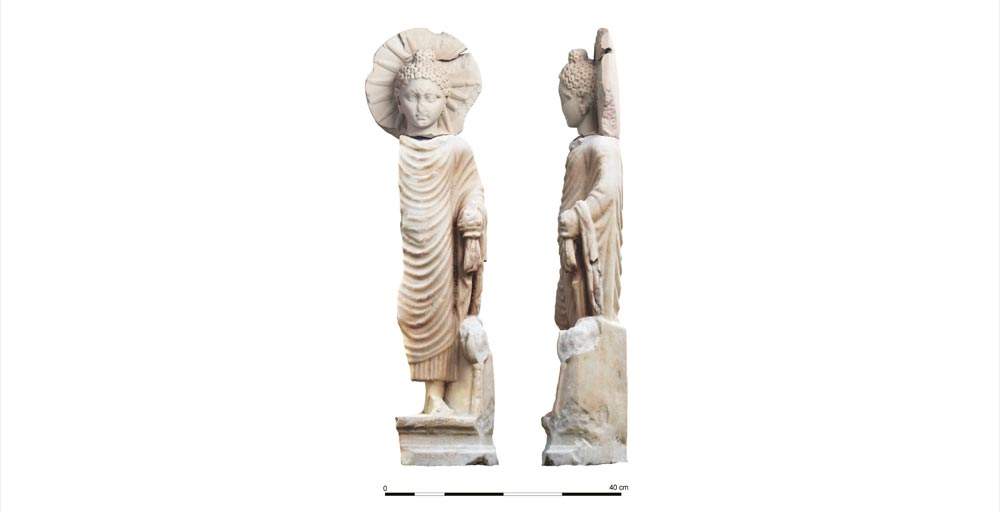Major archaeological discovery in Egypt where the joint Polish-American archaeological mission working in the Red Sea coast city of Berenice has managed to unearth a Buddha statue dating back to Roman times during excavation work in the city’s ancient temple. Making the announcement of the find was Mostafa Waziri, Secretary General of Egypt’s Supreme Council of Antiquities, pointing out that the archaeological mission has been working at the site since 1994 under the supervision of the Supreme Council of Antiquities, and pointing out that the current season of excavations at the site has resulted in the discovery of much important evidence of the existence of trade links between Egypt and India during the Roman era, when Egypt was centrally located on the trade route connecting the Roman Empire to many parts of the ancient world, including India.
There were numerous ports on the Egyptian Red Sea coast involved in this trade in Roman times, the most important of which was Berenice, where ships arrived from India laden with products such as pepper, semi-precious stones, textiles, and ivory, which were unloaded and then placed on camels that carried the goods across the desert to the Nile. Other ships then transported the goods to Alexandria, and from there the items crossed the Mediterranean and arrived in the rest of the Roman Empire.
Mariusz Gwiazda, head of the mission on the Polish side, said the discovered statue was made of stone that may have been quarried from the area south of Istanbul or may have been carved locally in Berenice and dedicated to the temple by one or more wealthy merchants from India. The height of the statue is 71 centimeters. It depicts the standing Buddha carrying part of his clothes in his left hand, also around his head is a halo with sun rays, indicating his radiant mind. Next to him is also one of the typical iconographic attributes, the lotus flower.
The mission, according to Steven Sidebotham, the person in charge on the U.S. side, also managed during work in the temple to uncover an inscription in Sanskrit dating back to the time of the Roman emperor Philip the Arab (244-249 A.D.), and it appears that this inscription is not of the same date as the statue, which is probably much older, as other inscriptions in the same temple were in Greek, dating back to the early first century A.D. Two coins from the 2nd century AD from the Middle Indian kingdom of Satavahana were also found.
 |
| Egypt, Roman-era Buddha statue discovered on Red Sea coast |
Warning: the translation into English of the original Italian article was created using automatic tools. We undertake to review all articles, but we do not guarantee the total absence of inaccuracies in the translation due to the program. You can find the original by clicking on the ITA button. If you find any mistake,please contact us.